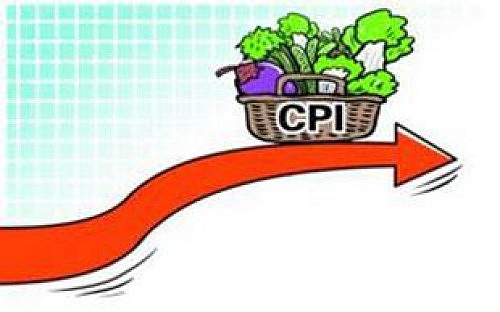China's CPI growth sends mixed signals
- By Mo Kaiwei
 0 Comment(s)
0 Comment(s) Print
Print E-mail China.org.cn, July 17, 2017
E-mail China.org.cn, July 17, 2017
|
|
|
China's consumer price index (CPI) rises 1.5 percent year-on-year in June, 2017. [File photo] |
China's consumer price index (CPI), main gauge of inflation, rose 1.5 percent year-on-year in June, the National Bureau of Statistics (NBS) announced on July 10.
In the past nine months, the change in the index has remained below 2 percent, except in January when it rose 2.5 percent, while, in the following two months, the rise was below 1 percent.
The index is not very likely to grow much in the long term, and the growth rate won't be higher than 3 percent. And, there's no need to panic, as it's just a common economic phenomenon.
Statistics show that the growth of China's CPI is suited to the present mode of more moderate GDP growth, which is expected to be around 6.9 percent in the second quarter. This means that both the overall economy and the CPI are growing at a medium/low pace.
The current situation is like driving a car uphill. You have to downshift to a lower gear, or the car will lose momentum.
Let's look at this issue another way. If China's GDP grows at a medium/low speed, but the CPI keeps growing fast, it will mean the economic growth must have been propelled by enormous loans and skyrocketing prices. This will lead to disastrous results, and the economy will stagnate.
Therefore, the current low growth rate of CPI is a necessary consequence of the government's macroregulation and control measures.
The current trend is sending mixed signals. The good part is that a low CPI growth rate means rises in the cost of living are also low, and an abundant supply of daily necessities is good news for common people.
However, a low growth rate will have a negative influence on production. The current growth rate is the result of price drops in the agricultural sector. In particular, the price of pork has dropped for 24 straight months. If the situation remains unchanged, farmers will be hurt.
To solve the problem, the authorities should have a clear understanding of the whole situation, especially bad elements. Proper policies should be launched to protect the husbandry sector. For example, the government could provide subsidies to farmers or establish a mechanism to buy their products for stockpiling. These measures will help regulate market supply and stabilize prices.
Meanwhile, there should be policies to boost demand, reform the income distribution system, and raise urban and rural residents' incomes, thus boosting public consumption and changing the current situation.
The writer is a researcher at China Academy of Regional Finance.
The article was written in Chinese and translated by Chen Xia.
Opinion articles reflect the views of their authors only, not necessarily those of China.org.cn.






